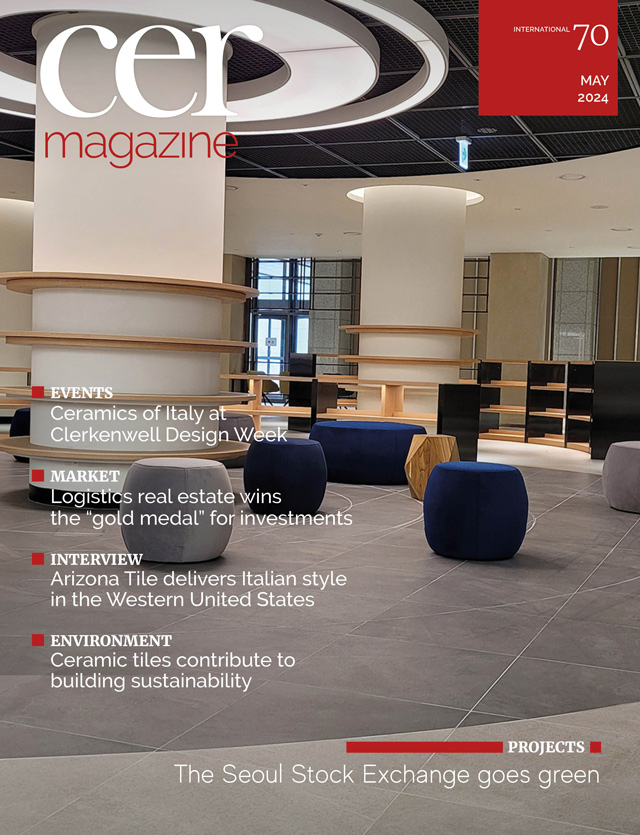Logistics real estate wins the “gold medal” for investments
(May 2024) | The logistics real estate market has proved more resilient in Italy than elsewhere in Europe, with institutional investors, specialists and developers showing sustained interest, particularly in Northern Italy. In 2023, the sector attracted investments of €1.7 billion, while total assets amounted to 48 million square metres and sales revenue €5.5 billion.
The logistics real estate market has remained more dynamic in Italy than in other countries amid a Europe-wide scenario characterised by significant macroeconomic headwinds. These challenges have significantly impacted investments in industrial and logistical real estate, which fell by 41% compared to the average for the period 2020-2022 but still exceeded €33 billion.
These are just a few of the statistics that emerge from the “2024 Report on the logistics real estate market in Europe and Italy”, published by Scenari Immobiliari.
“In Italy, logistics is now a well-established market segment in terms of both construction activity and the types of investors,” said Francesca Zirnstein, managing director of Scenari Immobiliari. “This is attributable to the growth of the contract logistics segment, which has increased by 25% over the past five years. Sector players include institutional investors, specialist firms and developers-investors, among others. Although the sector’s activities slowed in 2023 compared to 2022, resulting in a 43% decline in volumes, this was not due to structural issues but rather financial and geopolitical uncertainties, with the market proving more resilient in Italy than elsewhere in Europe.” However, the situation is far from uniform across Italy. “The segment has shown a mature demand for various types of products located predominantly in northern Italy,” explains Zirnstein. “Signs of improvement emerged from the second half of the year onwards, with greater dynamism during the final quarter of 2023 than in both July-September and in the preceding twelve months. This trend was mainly driven by solid interest in the sector and the ongoing demand for space in primary and complementary markets. Approximately €630 million of sales volumes were recorded in the fourth quarter of 2023.”
In 2023, the industrial logistics sector in Italy generated sales revenue of approximately €5.5 billion, corresponding to a year-on-year decline of more than 5%, while a slight contraction is forecast for 2024. About one-third of real estate wealth generated in this sector derives from capital investments in highly specialist properties and about 50% from warehouses and small spaces integrated within the manufacturing fabric of the various Italian provinces.
The logistics real estate market in Italy currently amounts to more than 48 million square metres, following the completion of approximately 2 million square metres of developments per year in both 2022 and 2023. Looking ahead to 2024, the projected development pipeline is expected to add just under 1.5 million square metres. “In addition, space is considered more crucial than in the past because warehouses need to hold adequate stock in order to cope with further supply chain disruptions, to mitigate the impact of rising costs, and to respond more rapidly to market demand.”
In Italy, logistics market demand has experienced steady growth, with approximately 690,000 square metres of space taken up in the fourth quarter of 2023. This uptake was similar to the figure from the previous quarter, resulting in a total of over 1.3 million square metres of property transactions in the latter half of the year.
Current demand is increasingly oriented towards efficient and sustainable properties. In response, real estate developers are working on projects that are set to add more than two million square metres to meet these evolving market needs.
The adaptability of the supply chain is evidenced by a notable improvement in net yields at a national level, which now stand at 5.8% and mark a significant recovery from the sharp declines seen in previous years. However, prime locations and trophy assets are experiencing lower yields, ranging from 4.8% to 5.7% for last mile properties.
“Logistics assets are reaffirming their strategic importance in the market due to the leading players’ awareness of the sector’s evolution and their growing commitment to the energy transition,” explains Filippo Salis, CEO and founder of SFRE. “Renewable energy is increasingly becoming a dominant factor in the logistics real estate sector, significantly enhancing the efficiency and sustainability of the entire value chain. Today, it is more crucial than ever to adopt innovative solutions such as hydrogen and photovoltaics, transforming logistics hubs from mere goods handling centres into genuine energy parks. In such setups, the production and exchange of clean energy become essential components of a collective vision for a sustainable future. This raises an intriguing question: What if logistics were to lead the way towards true climate neutrality?






